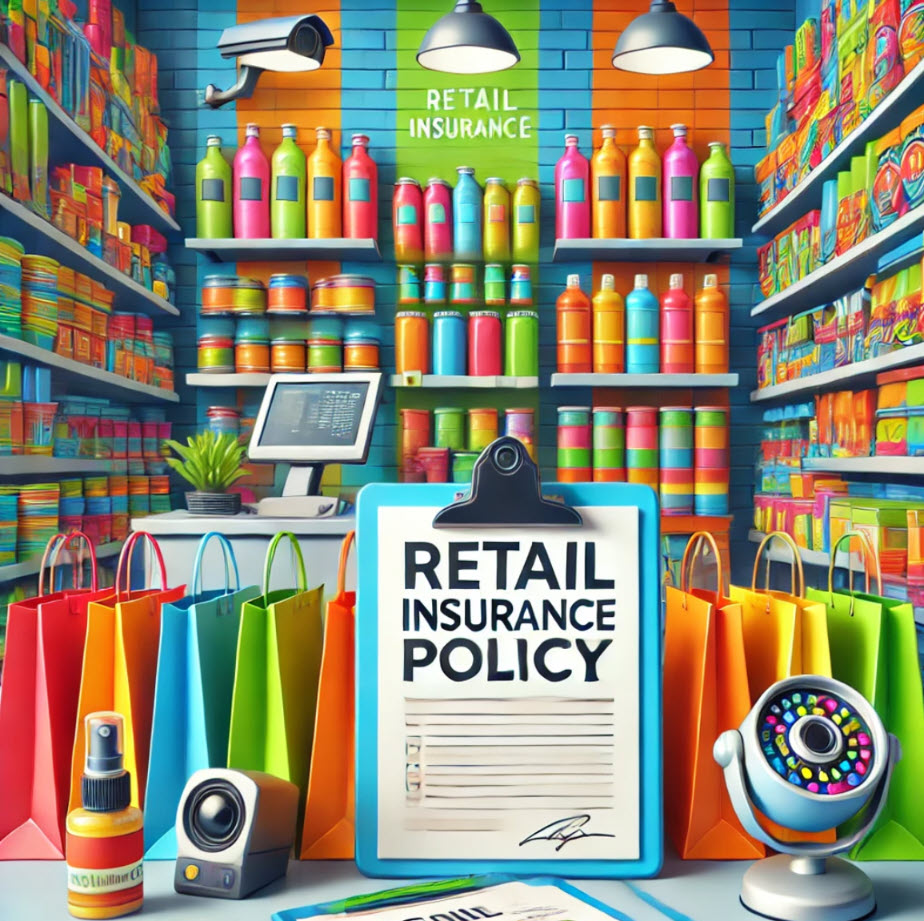Owning a retail store is a rewarding yet demanding endeavor, requiring attention to every operational detail, including insurance. From theft to natural disasters, retail businesses face a wide range of risks that can threaten financial stability and disrupt operations. The right insurance coverage is not just a safety net; it is essential for the long-term success of your store.
However, many retail store owners encounter challenges with insurance. Issues such as inadequate coverage, lengthy claims processes, and rising premiums can leave stores vulnerable at critical moments. Without proactive planning, retail owners risk significant financial losses.
In this article, we’ll identify common risks associated with retail business insurance and provide practical strategies to mitigate them. By understanding these pitfalls and implementing effective measures, you can protect your store and focus on serving your customers.
1. Insufficient Coverage for Store-Specific Risks
Retail stores often face unique risks, such as theft, vandalism, and water damage from burst pipes. Many insurance policies exclude coverage for these scenarios or limit protection, leaving store owners unprepared for costly repairs or losses. For example, shoplifting may only be partially covered, requiring owners to absorb the remainder.
Another overlooked aspect is coverage for inventory. Seasonal fluctuations or high-value items may not be adequately insured, resulting in financial strain during claims. Additionally, natural disasters like floods or earthquakes are often excluded, depending on location.
These gaps in coverage can lead to significant setbacks, particularly for small retailers operating on tight margins. Ensuring your policy accounts for these risks is crucial to safeguarding your business.
How to Protect Yourself from Insufficient Coverage for Store-Specific Risks
- Evaluate your policy to confirm protection against theft, vandalism, and water damage.
- Add riders or separate policies to cover high-value inventory and natural disasters.
- Consult an insurance advisor to identify potential risks specific to your location and operations.
2. Underinsured Inventory
Underestimating the value of your inventory is a common mistake that can have severe consequences. Retailers often overlook seasonal spikes or undervalue certain items, leading to inadequate coverage. This becomes problematic when claims only partially reimburse losses.
For instance, a fire or flood that damages holiday inventory can result in significant out-of-pocket expenses if the policy doesn’t reflect the increased value of stock during peak seasons. Similarly, specialty items may require specific coverage to ensure full replacement costs.
Regularly updating your inventory valuation is essential to avoid these shortfalls and maintain financial stability.
How to Protect Yourself from Underinsured Inventory
- Conduct regular inventory assessments, particularly during peak seasons.
- Adjust your policy limits to reflect current inventory value, including fluctuations.
- Include coverage for specialty or high-value items in your policy.
3. Delayed Claims Processing
A slow claims process can severely impact retail businesses, especially when damages force temporary closures. Lengthy wait times for payouts can delay repairs or replacements, resulting in lost revenue and dissatisfied customers. Common causes include inadequate documentation, disputes over claim validity, or insurer inefficiencies.
For example, a retailer affected by water damage might wait weeks for approval to begin repairs. During this time, the store’s closure not only affects revenue but also risks driving customers to competitors.
Choosing a reliable insurer and maintaining detailed documentation can help minimize delays and expedite claims.
How to Protect Yourself from Delayed Claims Processing
- Select an insurer with a strong reputation for prompt claims handling.
- Keep thorough records of inventory, damages, and expenses to support your claims.
- Maintain open communication with your insurer to address issues quickly and efficiently.
4. Increased Premiums After Filing Claims
Filing an insurance claim often results in higher premiums, even for unavoidable incidents. Retailers, especially those with physical storefronts, face higher risks and are more likely to experience these increases. Over time, frequent premium hikes can strain your budget and limit your ability to reinvest in your business.
This practice discourages some retailers from filing claims, leading to out-of-pocket expenses for damages. Understanding the financial implications of claims can help retailers make informed decisions and explore alternatives to mitigate premium increases.
How to Protect Yourself from Increased Premiums After Filing Claims
- Research policies with stable premiums and limited increases after claims.
- Negotiate terms with your insurer to cap premium hikes.
- Explore multiple providers to find competitive rates and favorable terms.
5. Overlapping or Excess Coverage
Retail businesses often end up with redundant or unnecessary insurance coverage. For example, both property and liability policies may overlap in covering damages caused by theft, leading to inflated costs. Similarly, policies may include add-ons for risks irrelevant to your operations.
This inefficiency can divert funds from critical areas of your business. Streamlining policies to address only relevant risks can reduce costs without compromising protection.
How to Protect Yourself from Overlapping or Excess Coverage
- Audit your current policies to identify and eliminate redundancies.
- Consolidate coverage with a single provider for simplicity and cost efficiency.
- Work with an insurance expert to customize policies tailored to your store’s needs.
Conclusion
Retail insurance is a cornerstone of business continuity, offering protection against unforeseen challenges. However, navigating its complexities requires careful planning and proactive management. Addressing risks such as insufficient coverage, delayed claims, and premium increases can help secure your store’s future.
By taking the time to evaluate your policies and working with experienced advisors, you can build a comprehensive insurance plan that safeguards your inventory, property, and operations. This not only provides peace of mind but also enables you to focus on growing your business.
Investing in the right insurance today ensures your retail store is prepared for tomorrow’s challenges. With the right strategies, you can protect your livelihood, employees, and customers while creating a solid foundation for long-term success.
Learn more about insurance categories related to your business.

